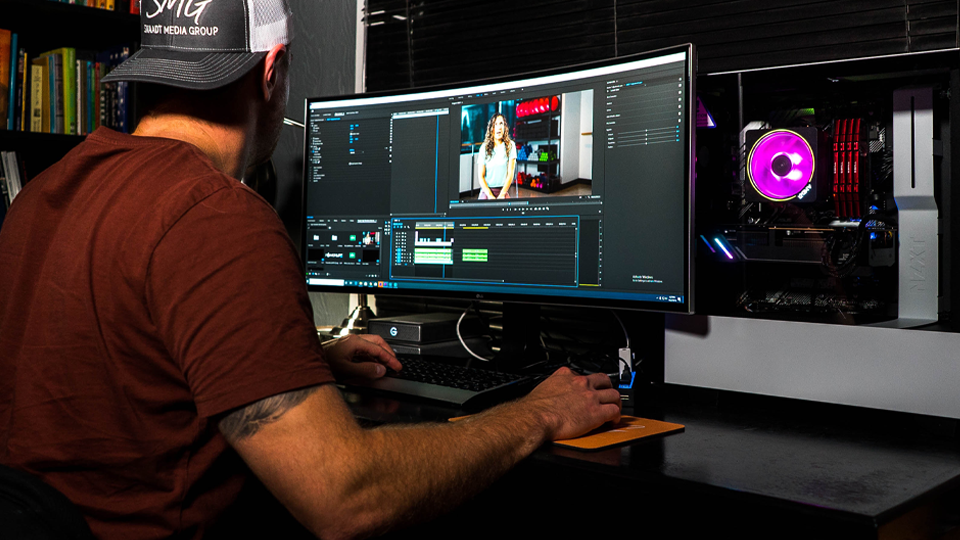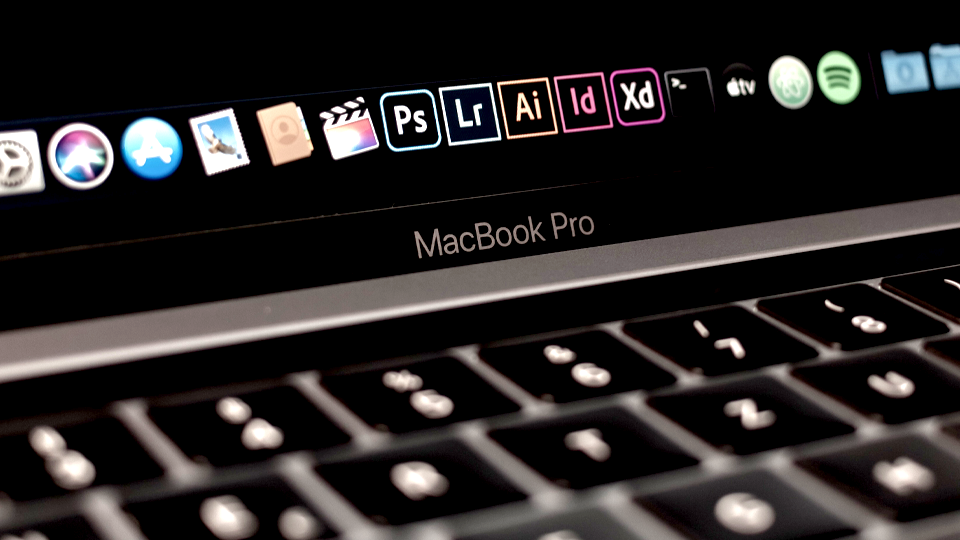11 of the most useful AI-powered video editing tools available right now
The Editors

5 Minutes

There are many AI-powered apps available to creatives. Here are the 11 most helpful for video editors.
When the Suite team attended the NAB Show in April 2023, we polled creatives on the conference room floor about their thoughts on the future of post production. Above all other responses, “Artificial Intelligence” (AI) was mentioned the most. The topic seemed to be on everyone’s mind; no matter who we spoke to, no matter their role in the post production process, there was a palpable excitement about machine-learning technology and how AI-powered tools might positively influence (or completely disrupt) current workflows and productivity.
Since the show, we’ve been back at the Suite offices reading up on the topic. What we’ve found is a Wild West scenario with developers and companies offering piecemeal apps, plug-ins, and software packages, and it can be a bit difficult to discern which tools will be the most useful to you. In this post, we’re featuring 10 of the most helpful AI-powered tools for video editors.
Before you dive any deeper, however, let’s be explicit: None of these tools are going to allow you to click a button, sit back and watch your computer edit on your behalf. Each of these applications is designed to complement your current workflow, to create efficiencies where possible, and improve your ability to translate a creative vision onto the screen. These artificial assistants will help you get to the finish line faster—but that’s only if you know how to use ‘em.
RunwayML
RunwayML is one of the most impressive of the AI-powered video editing tools available, hands down. Leaning on next gen machine-based learning, the software provides a slew of really impressive features, including “Inpainting,” which allows editors to quickly and easily remove objects or people from a frame, and “Remove Background,” which leans on the magic of AI to separate foreground and background layers, eliminating the need to hand-clip the subject matter.
Most impressive, however, is the latest update to Gen-2—a Text to Video tool that takes words and turns them into video content without the need to prompt the machine with other imagery. The potential here is boundless. For instance, editors can simply input their video into RunwayML, instruct it to “make it more cinematic,” and the computer takes care of the rest. This kind of technology is certain to disrupt the industry—it just needs to be perfected first.
Colorlab.AI
Using machine learning focused on media management and color correction-specific tasks, ColourLab.AI helps editors organize their footage, match it by color palette, and fine-tune it, all in one place. Editors can utilize the “Auto Color” feature, which analyzes imported footage and recolors it in a variety of styles, lean on the AI-powered “Timeline Intelligence” that groups similar shots by kind and color, or create an entirely new mood to a project by implementing one of the auto-generated “Smart LUTs.” The best part? No matter which aspect of the coloring process had AI-powered assistance, there’s always the ability for the user to fine-tune the computer’s work.
Timebolt
Tired of manually sifting through your timeline to edit out long pauses between audio clips? Timebolt leans on AI technology to analyze video and audio files simultaneously and automatically remove silences, or lulls in conversation, during long-take shots. Timebolt utilizes a simple, effective interface that allows users to make fine-tuned adjustments—like adding padding, filters, or time-based constraints—to the AI-generated edits, proving this is an effective, to-the-point tool for post production professionals who tend to cut interviews or podcasts on a regular basis.
Blackmagic Design – Neural Engine
Baked into the latest version of Davinci Resolve, Blackmagic Design’s artificial intelligence, coined Neural Engine, offers editors a slew of features. Most notable is the “Magic Mask” that uses artificial intelligence to more easily create masks and layers within a timeline, in the same the RunwayML tool works. Avoiding the arduous tasks of hand-clipping objects, people, or other elements within the frame can save significant time during the post production process.
Topaz Labs – Video Enhance
From the brainiacs at Topaz Labs, Video Enhance is a video upscaling tool that utilizes artificial intelligence to remove noise or fix other compression problems in a video file. Amazingly, this software creates AI-generated pixels to fill the gaps, improving the quality of the video file without having to stretch or distort the original content more than it is already. To be expected, the interface is intuitive and offers a simple “drag & drop” import. Once content lives in the Video Enhance software, editors can choose between different optimized machine-learning models. Gaia is the model specifically designed to avoid the “stair-stepping” or pixelated look sometimes found in computer-generated images; Theia, the app’s default model, provides users the ability to restore details, sharpen the video or reduce noise with access to more manual adjustments.
Sheffield Softworks – Keyper
Here’s a task-specific tool that will help editors speedily cut/mask people within a shot, layer between foreground and background objects, and add effects during post production. While this isn’t a perfect replacement for green screen work, Keyper uses AI technology to isolate a person within a video, making it outrageously easy to achieve a (very) similar effect. This tool enables editors to forego hand-clipping a person within their frame; here, it’s as simple as highlighting the subject, making some small adjustments, and continuing along with the edit.
Adobe Sensei
Adobe’s proprietary artificial intelligence machine, dubbed Sensei, is robust compared to some of the other tools on this list. But that’s to be expected from the creative software giant. Sensei works in the background of Premiere Pro and is automatically included in every user license.
Here are just a few tools worth mentioning:
- Scene Edit Detection - This is one of the most common tools used by video professionals. Enabling this function allows Adobe to automatically find/create cut points on a timeline.
- Music Remix - This featured might be considered a godsend by some creatives. Music Remix allows users to extend the length of music/audio files to match the length of video files—with the click of a button. Using AI technology, Adobe processes the audio file in the timeline and reproduces a longer version of it with near-seamless quality. Impressive and helpful.
- Auto-Reframe - This handy feature enables editors to simply click a tracking point (or multiple) and Adobe’s AI takes it from there, automatically tracking and readjusting the video’s frame to ensure the focus stays locked. This feature is notably helpful for editors working with action sports footage or other dynamic media with quick-moving subjects.
Eleven Labs – Altered Studio
Of all the tools mentioned on the list, this might be the most fun—or terrifying!—depending on how you look at it. Altered Studio is a voice-effects application that leans on artificial intelligence to enhance, alter, or completely change, a voiceover or other spoken-word audio track. Take the video above as an example: The actor’s voice is enhanced by the Altered Studio AI machine to sound more like Abraham Lincoln’s. And it works.
There are endless use-cases for this kind of technology throughout post production. One might be a freelance YouTube creator who wants to create a skit with multiple voices. Editors will have a field day with this tech, and it will be really interesting to see how it is employed in the future.
Kive.ai
Kive.ai is an AI-powered tool for media management and searchable reference libraries. Studio leads and post production supervisors, take notice of this program! After uploading content into Kive.ai’s database, users are greeted by reference libraries that become searchable, tag-able and more actionable than standard, shareable folders of content. This tool may be especially helpful to tenured teams or bigger studios with large archives of footage, or individuals like post production coordinators, seeking a more actionable way to organize their pool of media assets.
End Boost
This former Premiere Pro plug-in is now its own standalone app, coined End Boost. This is one of the simpler applications on the list, however, as it utilizes artificial intelligence to help mix (and even master) audio. End Boost allows for professional-grade, track-by-track ducking, compression, and mastering controls, with AI-powered presets included. While this application doesn’t take care of noise reduction, it’s a powerful tool for smaller teams that need an extra hand in the mixing suite.
LALAL.AI
Some creatives are touting LALAL.AI as “the best stem AI-powered stem separator” on the market. And it’s an amazingly helpful tool for teams that need assistance fine-tuning their audio. What this application does best is remove background noise, hums, and other annoyances from media tracks; it can also be a sneaky way to remove copyrighted music from a video file you’re hoping to include in a project and share on social media. For editors who need a tool to help clean up dirty audio or quickly separate audio files into stems, this is a product worth your time.




































